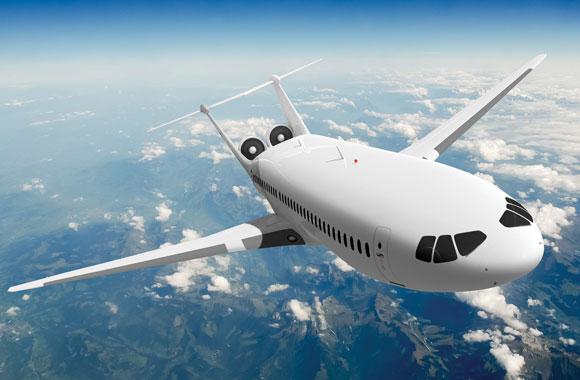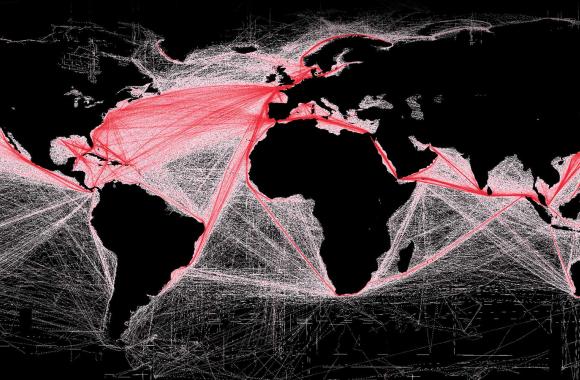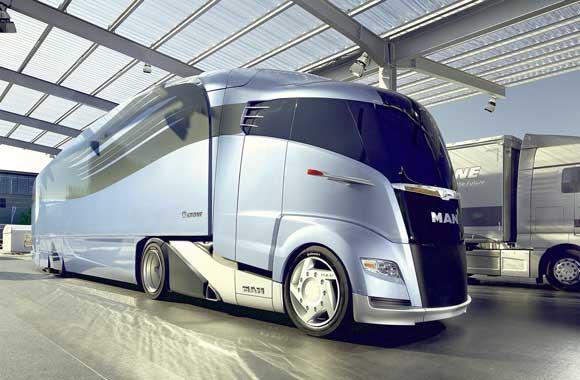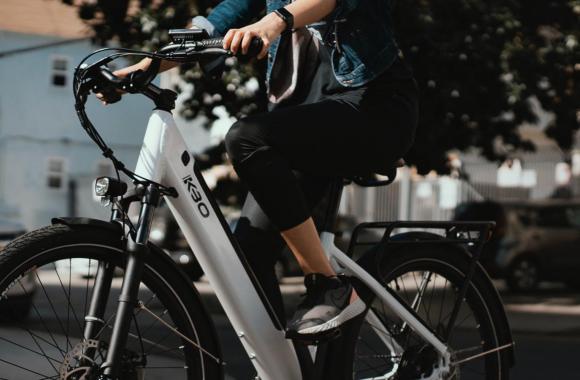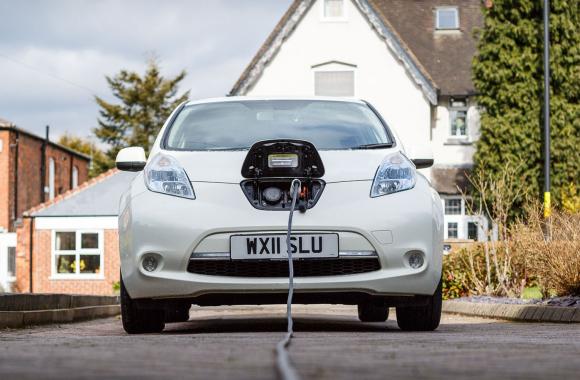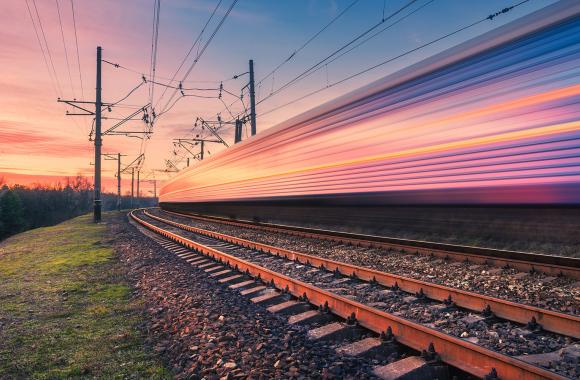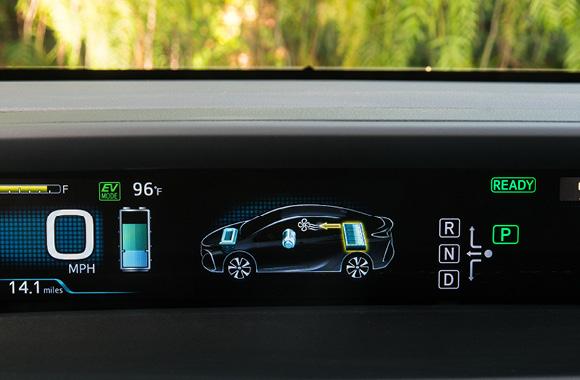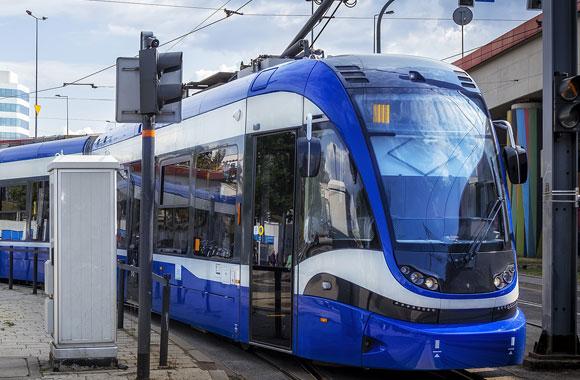High-Speed Rail
High-speed rail offers an alternative to trips made by car or airplane. It requires special, designated tracks, but can dramatically curtail emissions.
Reduced/Sequestered
2020–2050
To Implement
Operational Savings
Impact
If most of the high-speed rail lines in planning and construction continue at their projected pace, this solution can deliver 1.26–3.62 gigatons of carbon dioxide emissions reductions by 2050 compared with flying. Regionally, most impact will come from Asia, especially China. If high-speed rail is concentrated between cities with heavy, short-haul flight routes, impact could be greater. Implementation comes at a net first cost of US$0.64–1.74 trillion and also with higher operational costs than flying over 30 years, at US$0.69–1.88 trillion over the lifetime of high-speed rail infrastructure. However, this excludes many external benefits, including relief of airport congestion, travel time savings, and wider economic and environmental impacts.
Introduction
The International Union of Railways (UIC) defines high-speed rail (HSR) as a railway system where tracks are “new lines designed for speeds above 250 km/hr (155 miles per hour) and in some cases, upgraded existing lines for speeds up to 220km/hr (136 miles per hour).”
HSR has experienced significant growth in recent decades—especially in China, where the HSR network grew to almost 30,000 kilometers in a few years, representing around two-thirds of the global total. Growth is expected to continue as China and the European Union add to their extensive networks and new countries build their first lines. There were more than 56,000 kilometers of HSR lines worldwide in 2020. That number will increase by 50 percent when current construction is completed; many more thousands of kilometers are planned and under consideration.
HSR is powered by electricity. Compared with driving, flying, or riding conventional rail, it is the fastest way to travel between two points that are a few hundred miles apart and reduces carbon emissions up to 90 percent. Over time, its energy source is likely to get cleaner as renewables generate a greater share of electricity.
HSR is expensive and requires high ridership to break even. That is why only certain places in the world have sufficient population density to support HSR. China has by far the most HSR lines—more than 50 percent of the total—with Japan and Western Europe not far behind. Where adequate density exists, HSR can be an important component of a sustainable transportation system and bring vitality to city centers.
Project Drawdown’s High-Speed Rail solution involves the construction of HSR track networks around the world to shift intercity travel onto HSR as defined by the UIC. This solution replaces aviation of typical efficiency in 2014.
HSR’s most noted competitor—airplanes—generally emit more greenhouse gases per passenger-kilometer than HSR. This tends to be the case even when infrastructure emissions are included, but it depends heavily on the number of people in the HSR train and in the aircraft. Emissions per passenger-kilometer for a full aircraft can be lower than that of an almost empty train, but increasing travel on existing train services can reduce unit emissions. While HSR is a solution to multiple high-emitting modes of transportation, this study focuses on the replacement of air travel specifically.
Methodology
Total Addressable Market
We defined the total addressable market for HSR as the total nonurban travel projected by key sources such as the International Energy Agency (IEA) and the International Council on Clean Transportation (ICCT). We estimated the current market share of HSR (defined as the amount of functional demand supplied in 2018, with 2014 as the base year) from UIC and Amtrak data. The data show that HSR provides just over 3.2 percent of the global market for nonurban passenger travel.
Adoption Scenarios
We based projections of HSR adoption on announced plans for HSR track construction, which is chiefly done by governments. Using UIC data and other web searches, we estimated the total track length under construction and planned, along with estimated completion dates. Total track length estimates amount to 49,000 additional kilometers.
HSR has very different travel densities, or usage rates, in different parts of the world, so we collected the travel densities for countries with existing HSR, and used these values to predict passenger-kilometers for new tracks. This omits numerous factors that affect demand for new HSR lines, but as a first approximation at the global level, it is very useful. For countries without tracks, we used travel densities of the most similar country or region with HSR tracks.
We calculated the impact of increased adoption of HSR from 2020 to 2050 by comparing two growth scenarios with a reference scenario, in which total HSR travel remains fixed at percent of the total market.
- Scenario 1: includes the total announced track construction with expected completion dates and travel densities of each country with an additional 1 percent annual growth rate applied to HSR travel on existing tracks. Adoption is 1.81 trillion passenger kilometers (3 percent of the total addressable market).
- Scenario 2: includes the same inputs as in Scenarion 1, but with a 2.5 percent annual growth in travel density of each country. Adoption is 2.60 trillion passenger kilometers (4 percent of the total addressable market).
Emissions Model
For operating emissions, we included increased grid electricity use for HSR adoption and jet fuel emissions for the conventional alternative. We also included indirect emissions for infrastructure operations.
Financial Model
All monetary values are presented in 2014 US$.
First costs for HSR consist of track construction costs. We used a global average (including tracks in China, US, Japan, and Europe) of US$23.7 million per track-kilometer. We did not include first costs for the conventional alternative, aviation, because the marginal costs for new flight routes are very low (compared with that for HSR routes), and also quite hidden due to the fact that calculations involve an airline doing business analysis on its existing services and possibly negotiating with local airports, governments, and providers (and could also mean setting up a new office in a new airport destination, but if the new link is between two airports where the airline already has operations, then this cost would be zero. As a result of all these unknowns, the first costs for new airline links has been set to zero.
Operating costs for HSR and the conventional alternative include operations and maintenance costs of the infrastructure and energy for train motion (grid electricity), airports (ground operations), and aircraft (jet A/A1 fuel). We normalized these for trains on a per-passenger-kilometer or per-track-kilometer basis and for aviation, on a per-passenger-kilometer or per-available-seat-kilometer basis.
Results
Scenario 1 yields an emissions reduction of 1.26 gigatons of carbon dioxide equivalent greenhouse gases over 2020–2050, at the end of which would exist 81,000 kilometers of track (about 30,000 more than today). Most emissions reductions come from Asia due to the extensive HSR growth planned in China. Globally, this would result in an additional US$0.64 trillion in net first costs, and would incur an additional US$0.69 trillion in lifetime net operating costs over the lifetime.
Scenario 2 avoided 3.8 gigatons of emissions. The associated net first cost to implement is US$1.74 trillion and the lifetime net operational cost is US$1.88 trillion.
Discussion
We did not include reduced road congestion, fewer road accidents, lower local pollution and noise, reduced susceptibility to weather disruption, easier and more comfortable travel, and other benefits of HSR in these calculations. HSR is expensive to build, with higher expenses for higher speeds. Some research points to positive economic effects of HSR, but it is unclear whether these are actually generated or merely redistributed.
Encouraging more usage of existing HSR tracks makes sense, because that improves the solution’s climate and financial impacts, and the marginal cost of adding more trains is very low. The EU has this policy, and we see many more countries following suit. We also expect increased travel on Chinese lines, which already have excellent coverage of the country.
Transport impact analyses often use a choice model, but this is not possible at the global level because of sparse data. Our approach is reasonable because it is grounded in firm construction announcements and existing travel.
The high quality of HSR travel tends to attract many air travelers on reasonable-length routes; the conditions under which HSR can capture a lot of the traveling market tend to be where it can complete the journey in around three hours (at an average speed of 220 kilometers per hour, this is just under 660 kilometers, or 410 miles). However, it also attracts people who would have used cars or conventional rail, or who would not have traveled at all before HSR. We did not model this diversity of alternatives due to the inherent complexity in identifying and combining worldwide data.
The positive effects of HSR can be maximized by building HSR lines in travel corridors where HSR will compete for travelers with higher-polluting travel modes such as airlines and automobiles and where travel demand is already high, such as between larger cities in close proximity.
What You Can Do
If high-speed rail is available, use it where possible instead of driving or flying.
Learn about high-speed rail. If it could be appropriate for your community, introduce policymakers to the benefits.
- Expand your knowledge by exploring another Drawdown solution.
Co-benefits
High-speed rail alleviates the need to use land for roads and highways.




